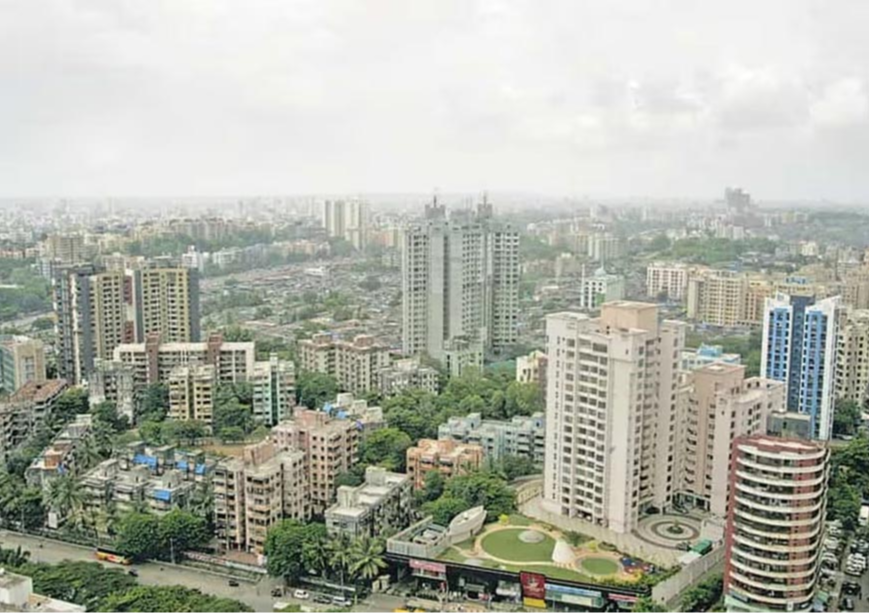-
CENTRES
Progammes & Centres
Location
The universal desire to establish inclusion as the driving ideal for development shall remain unachieved if it is not realised in the most significant habitat in which the world lives—the cities

Urbanisation has become and is likely to remain the foremost driving force of global development. Presently, cities generate close to 80 percent of the world’s Gross Domestic Product (GDP). Simultaneously, the world has become demographically urban, with more than 50 percent of the people residing in urban settlements. Moreover, it is widely agreed that this percentage will continue to increase and probably reach 70 percent by 2050.
Given the dominance of cities in development and demography, the concept of inclusion and the cherished goal of shared prosperity will remain mere utopian ideas if cities do not become inclusive. This realisation has led international agencies to feverishly talk of ‘inclusive cities’ and place the concept at the forefront of global policies and goals. The United Nations Sustainable Development Goals (SDGs), focus on ‘developmental inclusion’, aiming to end poverty and hunger and ensure health and education. The SDGs want universal gender equality, water and sanitation, modern energy, and decent work opportunities for all. From the urban perspective, SDG 11 aims explicitly to “make cities and human settlements inclusive, safe, resilient and sustainable”.
The United Nations Sustainable Development Goals (SDGs), focus on ‘developmental inclusion’, aiming to end poverty and hunger and ensure health and education.
This expressed universal desire to establish inclusion as the driving ideal for development shall remain unachieved if it is not realised in the most significant habitat in which the world lives—the cities. The question is whether cities can deliver inclusion. While ‘inclusion’ is hugely multi-dimensional, this article picks the areas of employment, shelter, gender, and old age through available evidence regarding their current situation in cities and attempts to draw conclusions regarding their ability to become inclusive.
In general, the acceptance of inclusion as a moral concept and as an ideal that nations should follow is of recent origin. However, after accepting that inclusion is a moral concept worth emulating and that every international charter unequivocally swears by inclusion, is there ground to believe that cities around the world have made a sincere attempt to further that cause?
Let us first look at the subject of employment. The International Labour Organization (ILO), in its recent flagship report ‘World Employment and Social Outlook Trends: 2024’, has projected a global unemployment rate of 5.2 percent in 2024, up from 5.1 in 2023. This would mean that in 2024, an additional two million workers will be looking for jobs. There is also a likelihood that the labour market outlook and global unemployment will worsen. In the area of employment, therefore, cities, despite their attempts, have always had a percentage of citizens who have been unable to find employment. Many countries with falling populations have encouraged in-migration to satisfy their work requirements. However, of late, countries and their cities are reassessing migratory impacts and, in several cases, making exclusionary decisions based on their experiences.
The Greater London Authority’s “Inclusive London” document (2018) states that London has a fair share of long-standing inequalities and discrimination, including child poverty.
Apart from employment, the availability of affordable and universal shelter is a significant benchmark to measure inclusivity. In New York City, which houses 8.3 million people, one in every 83 citizens is homeless. That is more than 100,000 persons who spend their nights in the city’s shelter system. Moreover, one in every three children lives below the poverty line. In 2021, almost 2.7 million New Yorkers lived in poverty, or 13.9 percent, compared to 12.8 percent of all Americans.
Similarly, 25 percent of Londoners live in poverty. London has also witnessed the biggest rise in rough sleeping (the homeless sleeping without adequate shelter, generally on the city streets), with the number going up to 10,053 in 2022-23. The Greater London Authority’s “Inclusive London” document (2018) states that London has a fair share of long-standing inequalities and discrimination, including child poverty.
Further, the Asian Development Bank studied a sample of 211 cities in 26 countries and found home prices severely unaffordable for median-income households in more than 90 percent of the cities. The problem extends beyond large cities to smaller agglomerations. With affordable housing out of reach, many urban residents settle for inadequate housing with limited access to safe water and improved sanitation.
One of the primary causes why inequality becomes entrenched in cities is the appreciation of and values. As land prices escalate, the ability of the poor to acquire a piece of land or rent out space, either for shelter or self-employment, becomes more challenging. During 2023, property prices in India’s 13 largest cities rose 18.8 percent over a year. Regarding residential land, Mumbai, Delhi, Kolkata, Bengaluru, Pune, Chennai, Hyderabad, Ahmedabad, Jaipur ,and Surat were the 10 costliest Indian cities. If the tenth-ranked city is taken as an example, and if it is presumed that a low-income family seeks a 400 sq ft apartment in Surat, the family would have to pay between INR 15 to 20 lakhs for it. Being beyond the affordability range, that family must settle in a slum. As cities become more extensive, land prices climb up sharply. For example, for a similar 400 sq ft apartment, the family would have to pay INR 1.78 crore in a Mumbai suburb. No wonder almost half the population of Mumbai lives in slums.
As land prices escalate, the ability of the poor to acquire a piece of land or rent out space, either for shelter or self-employment, becomes more challenging.
Thus, all large cities suffer from the ‘employability’ and ‘livability’ paradox. On the one hand, the largest cities are most likely to provide jobs, mostly in the informal sector. On the other hand, they are most likely to make livability unaffordable. In the current scheme of things, informal labour cannot hope to find decent shelter.
The performance of cities in the areas of gender inclusion or provision for the elderly does not appear to be any better. Across the world, the number of women in the workforce is less than men. Women universally also get paid less than men for the same jobs. Similarly, the elderly face difficulties while living in cities. In London, for instance, its transport network in many areas is inaccessible to older or people with disabilities with reduced mobility. There are employment and pay gaps and glass ceilings that women, Black, Asian, other minority groups, and people with disabilities face. By their nature, cities are economies that look for efficiency and productivity. Unfortunately, the needs of older people are not the needs of productivity. They are issues of morality and humanity. Thus, cities must turn from their single-minded pursuit of economic gain to allow for the care of older citizens.
An inclusive city has many more dimensions of inclusivity to contend with. However, we have seen from the analysis above of certain critical areas of inclusivity—employment, shelter, gender and older people, that the cities, despite their efforts, find it enormously challenging to satisfy the criterion of inclusivity in full measure. This almost makes us conclude that city forces negate the concept of inclusion, and the best efforts to make them work against their innate nature seem to leave the effort towards inclusion only very partly successful, visible on the surface but defeated in substance.
Ramanath Jha is a Distinguished Fellow at the Observer Research Foundation
The views expressed above belong to the author(s). ORF research and analyses now available on Telegram! Click here to access our curated content — blogs, longforms and interviews.

Dr. Ramanath Jha is Distinguished Fellow at Observer Research Foundation, Mumbai. He works on urbanisation — urban sustainability, urban governance and urban planning. Dr. Jha belongs ...
Read More +